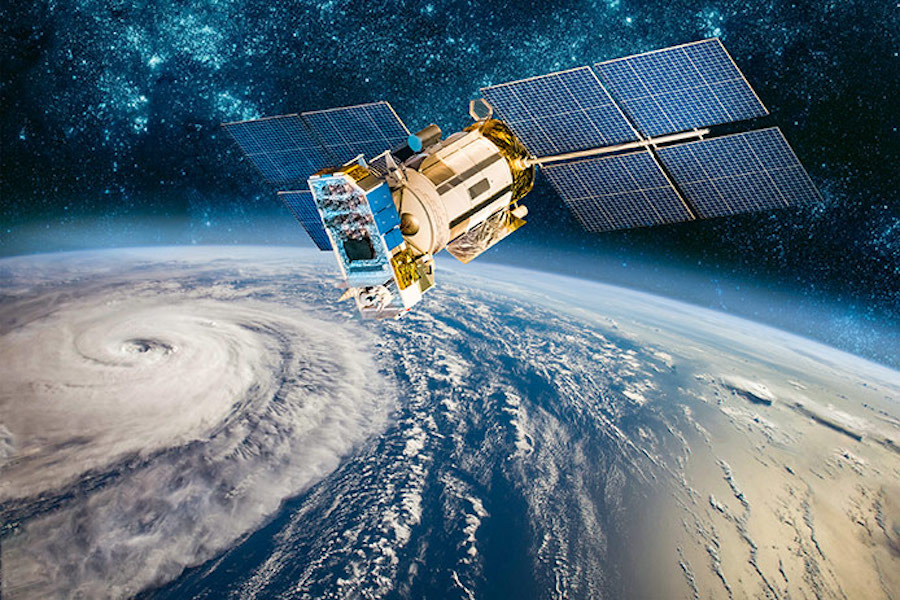The program office for the Electro-Optical Infrared Weather System extended the competition to spring 2022, said Col. Brian Denaro, program executive officer at the Space Systems Command
WASHINGTON — The U.S. Space Force was expected this year to choose which vendors will build next-generation weather satellites for the Defense Department. But the competition is being extended until 2022 to give the teams more time to fine tune their designs, a program official said.
The Space Enterprise Consortium — a Space Force organization that works with startups and commercial space companies — in June 2020 awarded $309 million in contracts to three teams: Raytheon Technologies, General Atomics, and Atmospheric & Space Technology Research Associates. All three are proposing concepts for a constellation of polar-orbiting weather imaging and cloud characterization satellites known as Electro-Optical Infrared Weather System, or EWS.
“The original strategy was to down-select in spring 2021. However, the EWS program office extended the competition to spring 2022 based on positive vendor progress and available resources,” Col. Brian Denaro, program executive officer for space development at the Space Systems Command, said last week in a statement to SpaceNews.
“This extension allows the program office the flexibility to make a confident down-select decision based on a more mature design,” said Denaro.
The EWS satellites will collect cloud forecasting and theater weather imagery data. That data currently is provided by an aging constellation of four Defense Meteorological Satellite Program (DMSP) spacecraft that are expected to run out of service life anywhere from late 2023 and 2026.
The Space Enterprise Consortium is working with the three teams under so-called Other Transaction Authority agreements intended to reduce red tape and allow contractors to co-invest in projects. The Space Force said it plans to select at least one for an on-orbit demonstration in 2023.
- Raytheon is proposing an EWS concept it calls TWICC (short for Theater Weather Imaging and Cloud Characterization) using a smaller version of the Visible Infrared Imaging Radiometer Suite (VIIRS) instrument originally developed for the National Oceanic and Atmospheric Administration’s Joint Polar Satellite System.
- General Atomics Electromagnetic Systems is offering a system of 15 small satellites equipped with visible and infrared instrument from EOVista. Braxton, a company now owned by Parsons, is developing a ground system architecture for command and control of the EO/IR satellites.
- Atmospheric & Space Technology Research Associates is proposing a roughly 50-satellite constellation of 12U cubesats. ASTRA’s team includes Lockheed Martin, Science and Technology Corp., Pumpkin Inc., and Atmospheric & Environmental Research.
